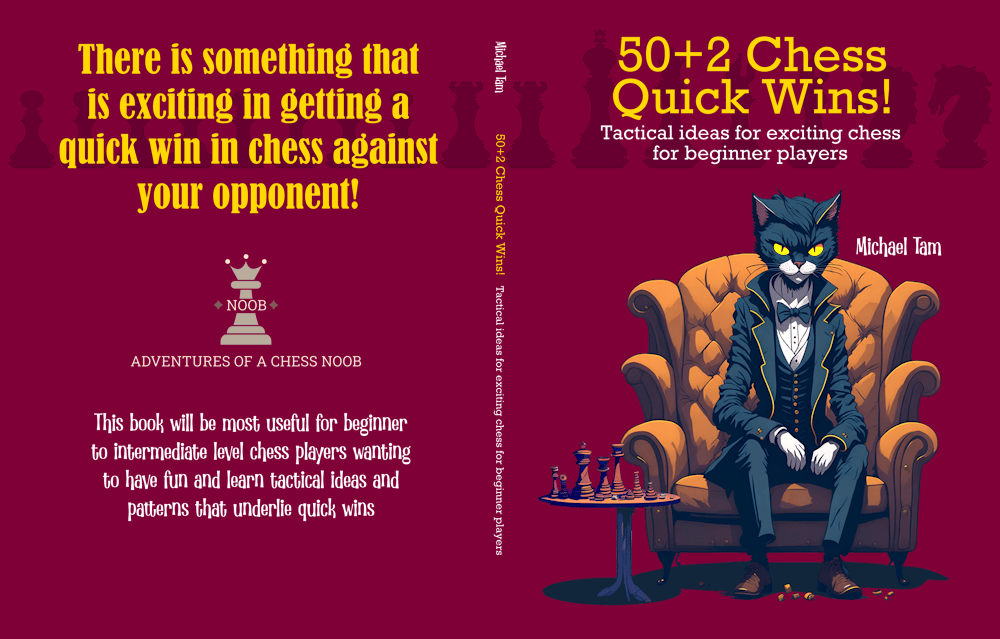
Nimzowitsch to Vienna Gambit Declined | CRUSHING VICTORY!
#nimzowitsch #viennagambit #bishopsac #doublecheck
I recently played this club tournament match; I had the White pieces and played for Team Sydney, while my opponent played for Team Melbourne!
Against (1. e4), my opponent played the uncommon Nimzowitsch Defense (1... Nc6). Now, Aaron Nimzowitsch (1886-1935) was one of the fathers of the Hypermodern school, and this defence should be seen from the perspective of the hypermodern approach. Rather than controlling the centre with pawns as per the Classical or Modern approach, it attempts to develop pieces early to undermine the opponent's control of the centre.
Historical note:
Nimzowitsch seems to have been bit of a character who seriously irritated his contemporaries. Tartakower, who was a colleague and advocate of the nascent hypermodernism once quipped that Nimzowitsch, "pretends to be crazy in order to drive us all crazy!" The normally phlegmatic Maróczy had such an argument with Nimzowitsch at a tournament in Slovenia that he challenged him to a duel with pistols! Modern disagreements between Kramnik and many others, or between Niemann and Carlson seem completely staid in comparison!
The most common responses to the Nimzowitsch Defense are Nf3 or d4. However, I prefer Nc3 which occurs less than 10% of the time, and potentially transposes the game into a Vienna! The logic? I gain control by moving the opening towards a position that I'm familiar with, but not likely to be familiar to the opponent, especially at the beginner-intermediate level.
This ends up succeeding! Black again avoids playing a centre pawn with (2... Nf6) and here, I decided to play a tricky move with (3. f4!?). The logical move would be (3. d4) but I suspected that my Nimzowitsch playing opponent would be prepared for it. However, f4 baits Black into playing e5 themselves to avoid the impending e5 with an attack on their knight. And that's what happened!
Those of you who know the Vienna Gambit would recognise the position; it has transposed into the Vienna Gambit (Falkbeer Variation) Declined with 3... Nc6. And this is a common but serious mistake! The tactical pattern now declares itself; White captures the e5-pawn and then chases Black's knights with the centre pawns and Black is forced to un-develop their king's knight to g8! White wins the centre and a big lead in development by the end of move 6! More than that, we're now in "my territory" of the Vienna Gambit, and although my opponent was higher rated than me at daily (ELO 1416 vs 1208), I was fairly sure that I had very good winning chances!
Indeed, on move 9 and 10, I played a couple of tricky moves that Stockfish doesn't approve of (evaluation goes back to equality at [0.00]) but sets up a devastating attack! Firstly, I sacrifice my bishop (9. Bxf7+), which forces Black's king onto the fully open f-file, exposing it, and removing its right to castle. Then on move 10, I castle my rook onto the f-file, to prepare for a double-check attack! Now, these moves are technically inaccurate/mistakes, as I'm just one-step too slow. This means that if Black plays very accurately, the attack will fail. However, with Black unfamiliar with the Vienna, they weren't sensitised to the danger and played (10... Nge7??), a seemingly sensible developing move, but it was a blunder [+5.7] giving me that single tempo step that I needed!
The double-check down the f-file hits with (11. Ng5+!). This is a powerful move - activating two pieces into the attack and unpinning the knight with an attack on Black's undefended light square bishop. After (11... Kg8 12. Qxg4), Black is close to checkmate as Qe6+ will be checkmate in almost all lines!
Black finds the one good move with (13. Qe2), offering to trade queens and defend the critical e6 square from White's queen. In this position, Stockfish considers the rook sacrifice (Rxf8+) to be the most accurate. I considered this move, but I couldn't see a mating attack. There isn't one and White would need to play some accurate knight manoeuvres down that line. In the game, I played the simpler and more direct (13. Qe2) with the logic of then playing Qc4+, which is along the same diagonal and winning attack as e6.
This ends up being successful. Black attempts to defend the c4 square with a knight, but I could simply force it away with a pawn. Black counterattacks my knight on the opposite side of the board, but my attack was simply too strong. A few desperate trades occur, but the structure of my attack remained. After a rook lift and then (20. Rh3+), skewering Black's king and rook, Black resigned. At high depth, Stockfish reckons that there is a [+M18], but in the position, Black had only two legal moves. They had to trade their queen for my rook (20... Qxh3 21. gxh3), their best move, or cleanly lose a rook (20... Kg6 Rxh8). Emotional damage. GG!
The big takeaway from this game is to see whether you can transpose unfamiliar openings towards those with which you are familiar! Tactically, the idea is moving the game from where your opponent has the knowledge advantage, to one where you do!




